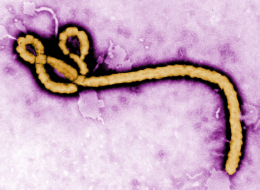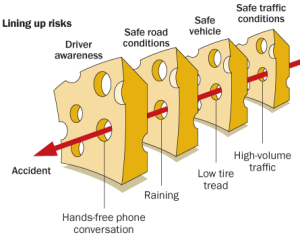The Truth About Ebola – What & WHO to believe?
 EDITORIAL: Who are we to believe? The news media that profits from sensationalism? Or federal and public health officials who are desperate to avoid panic? What is the truth about the Ebola virus? Right now it’s not clear who to believe, and we continue to wonder, “What is the Truth about Ebola.” Here are some of my thoughts and related articles, but I invite you to respond.
EDITORIAL: Who are we to believe? The news media that profits from sensationalism? Or federal and public health officials who are desperate to avoid panic? What is the truth about the Ebola virus? Right now it’s not clear who to believe, and we continue to wonder, “What is the Truth about Ebola.” Here are some of my thoughts and related articles, but I invite you to respond.
With the number of Ebola cases doubling, doubling and doubling every week or two, or three; how long might it take to reach millions, or billions? Not only is the number of cases grossly under-reported, but health officials and governments are grossly downplaying the risk and misleading the people. It seems like they’re lying, and that doesn’t help, because it erodes public trust and contributes to growing fears.
 |
HOLES IN THE SAFETY NET(s)Even with multiple safeguards, rapid spread of horrific disease (like terrible traffic accidents) can occur. This is the thought behind the “Swiss cheese” model of risk, developed by British scientist James Reason, and described by Vamsi Aribindi, a medical student who wrote Ebola in Texas: A fascinating story of system errors (referenced article below). |
Systems for disease management may be in place, but human error and human nature can easily circumvent those protective measures, as we saw when the Liberian gentleman was sent home from a Dallas hospital, even after telling them he just returned from Liberia. That probably was because he lacked health insurance, and the hospital and Texas Governor have a lot of explaining to do.
What do you think will happen this flu season when hordes of people show up in hospitals with “flu-like symptoms” and in panic mode? Will they be put into isolation wards? And might that make matters worse if most just have the flu but one actually has Ebola?
The story keeps widening as the news media learns more and pressures government officials to tell the truth. Initially, we were told that the gentlemen flew directly to Dallas, but then we learned there was a layover. We were first told that only immediate family had contact, but now we learn that at least 5 kids in 4 school districts did as well, and the projections are up to 100 people may have also been exposed. And the latest is that family members say he vomited outside on the ground. What about the flies? Or the mosquitos? Or the family pets? Information about those risks is spotty.
And what of the people on airline flights, starting with the guy from Liberia, and extending to the Dallas nurse who got mistaken CDC clearance to fly from Dallas to Cleveland to plan her wedding and returned with a low-grade fever and then tested positive for Ebola? Officials say it’s impossible to get infected without direct contact with bodily fluids. But who used the restroom (in the plane or in airports) and did they wash their hands? Can we even find out who those people are? Yes, the CDC can monitor reported spikes in flu-like symptoms, but by then hasn’t the pandemic already begun? America may have excellent medical care, but with a widening wealth gap, many still have no insurance, and our lifestyle is very mobile, which tips the risk scale in the other direction.
While the chance of a global pandemic may be low compared to airborne diseases like measles and flu, the impact can be catastrophic, and it’s entirely possible the virus could mutate to become airborne since it’s mutated several times already.
Officials are trying to avoid panic by downplaying the risks, not telling the whole truth, and saying the virus can ONLY be transmitted by direct contact with bodily fluids once the patient shows symptoms. But the news media tells a different story.
Maybe this is why conservatives don’t want schools to teach critical thinking skills – because questioning officials threatens government control. In my view, the government must be MUCH more transparent and truthful and remind people how they can protect themselves, such as with frequent hand washing. Pointing to the “swiss cheese” risk model and how we need to address multiple holes in safety nets, and funding that effort, seems more productive than pointing to others for blame. Without that transparent, information and common sense advice, citizens will lose trust — more than they already have, and it will extend beyond healthcare to the economy, military, and all of government. But it’s human nature to lie and cover you’re a$$.
What and WHO to believe?
In reference to the hazmat-trained hospital worker who wrote this excellent article in Huffington Post, does anyone else find it odd that the most meaningful Ebola explanations seem to have come from low-level medical workers and NOT from the news media or government & medical officials? It’s hard to know what or WHO to believe when the news media profits from sensationalism and government officials will say anything to downplay the risks and avoid panic. But the growing misinformation erodes public trust and actually contributes to growing fears.
I also liked Vamsi Aribindi’s description of the “Swiss cheese” model of risk, referenced above. He’s a medical student who, like Abby Norman, seems to have developed critical thinking skills that appear to be lacking in the “officials,” and in politicians who prefer finger pointing over reason.
Related articles
I’ll likely add more and invite you to add others as a Reply comment below.
- Ebola in Texas: A fascinating story of system errors (Excellent Perspective from medical student)
- I’m a Hazmat-Trained Hospital Worker: Here’s What No One Is Telling You About Ebola
- Here’s Who’s Blaming Who for Ebola (TIME)
- World would probably already have cure for Ebola if it were not for spending cuts, says top US official
- Ebola Vaccine Would Likely Have Been Found By Now If Not For Budget Cuts: NIH Director
- Bio-Disaster Hospital Preparedness Program Budget Has Been Cut 50 Percent Since 2003
- Ebola’s Incredibly Infectious. Ebola’s Also Hard To Catch. Confused? Here’s How To Understand.
- WHO: Ebola Is Modern Era’s Worst Health Emergency
- WHO says major outbreak in West ‘unlikely’ (but others warn of 1M cases by Jan.)
- Putting Ebola’s risks into perspective
- Dallas ER sent home an Ebola-infected patient
- US Ebola patient’s friends under armed guard as clean-up is hit by delays
- Ebola Patient Thomas Eric Duncan Vomited Outdoors, Witness Tells Reuters
- Ebola lapses persisted for days at Dallas hospital
- Ebola Test Is Positive in Second Texas Health Worker
- Texas Hospital Makes Changes After Ebola Patient Turned Away
- Ebola: Nurses slam Texas hospital
- About 70 hospital staffers cared for Ebola patient
- Man in U.S. With Ebola Had Been Screened to Fly, but System Is Spotty
- Amber Vinson, Dallas Ebola Patient, Says CDC Gave Her Green Light To Fly
- Ebola Patient’s Journey Shows How Global Travel Is Open to the Spread of Disease
- NBC News Freelancer in Africa Diagnosed With Ebola
- NBC News cameraman has Ebola, network reports
- American TV cameraman in Liberia tests positive for Ebola
- Health Officials Say Up To 100 People May Have Had Some Kind Of Contact With Texas Ebola Patient
- What Ebola Is Telling Us About Fragmentation In Public Health Strategy (Forbes)
- Ebola: Are health care workers ready? (With CNN video infographic)
- Ebola raises concerns over hospitals’ infection controls (USA Today, I commented)
- How to Help in Efforts to Stem Ebola’s Tide
- The Ebola Emergency — Immediate Action, Ongoing Strategy (New England Journal of Medicine)
- What You Need to Know About the Ebola Outbreak (NYTimes with good stats & charts)

